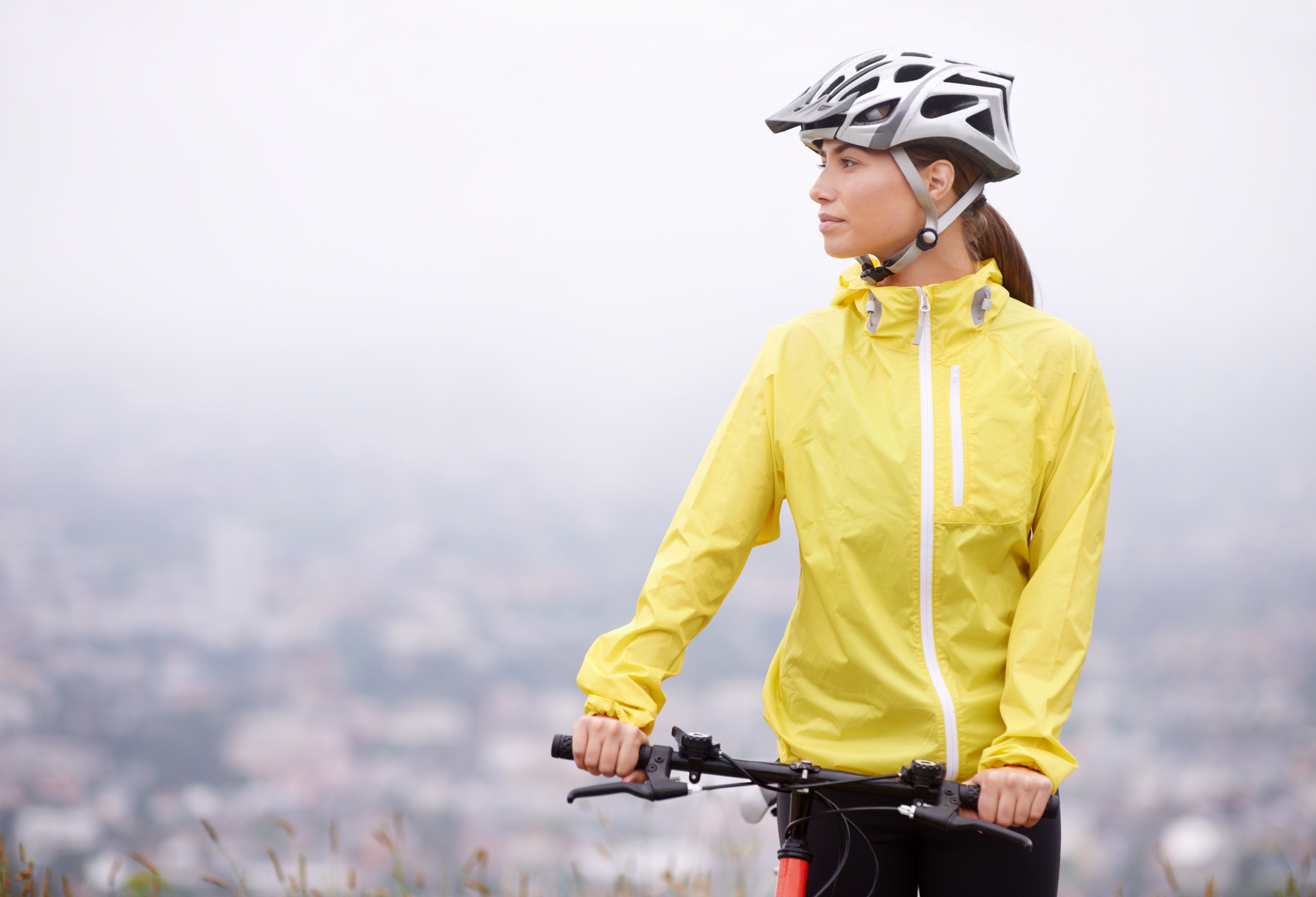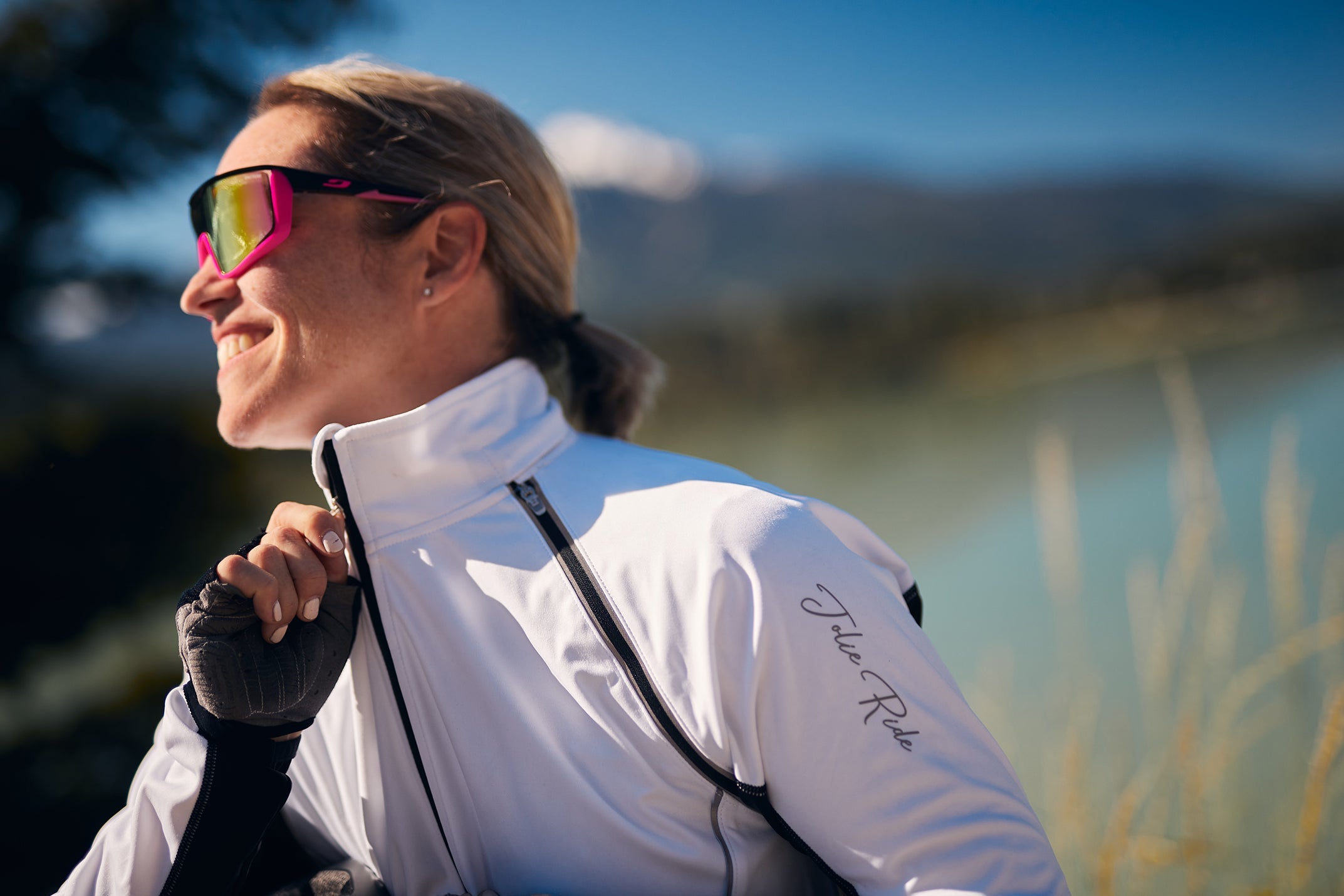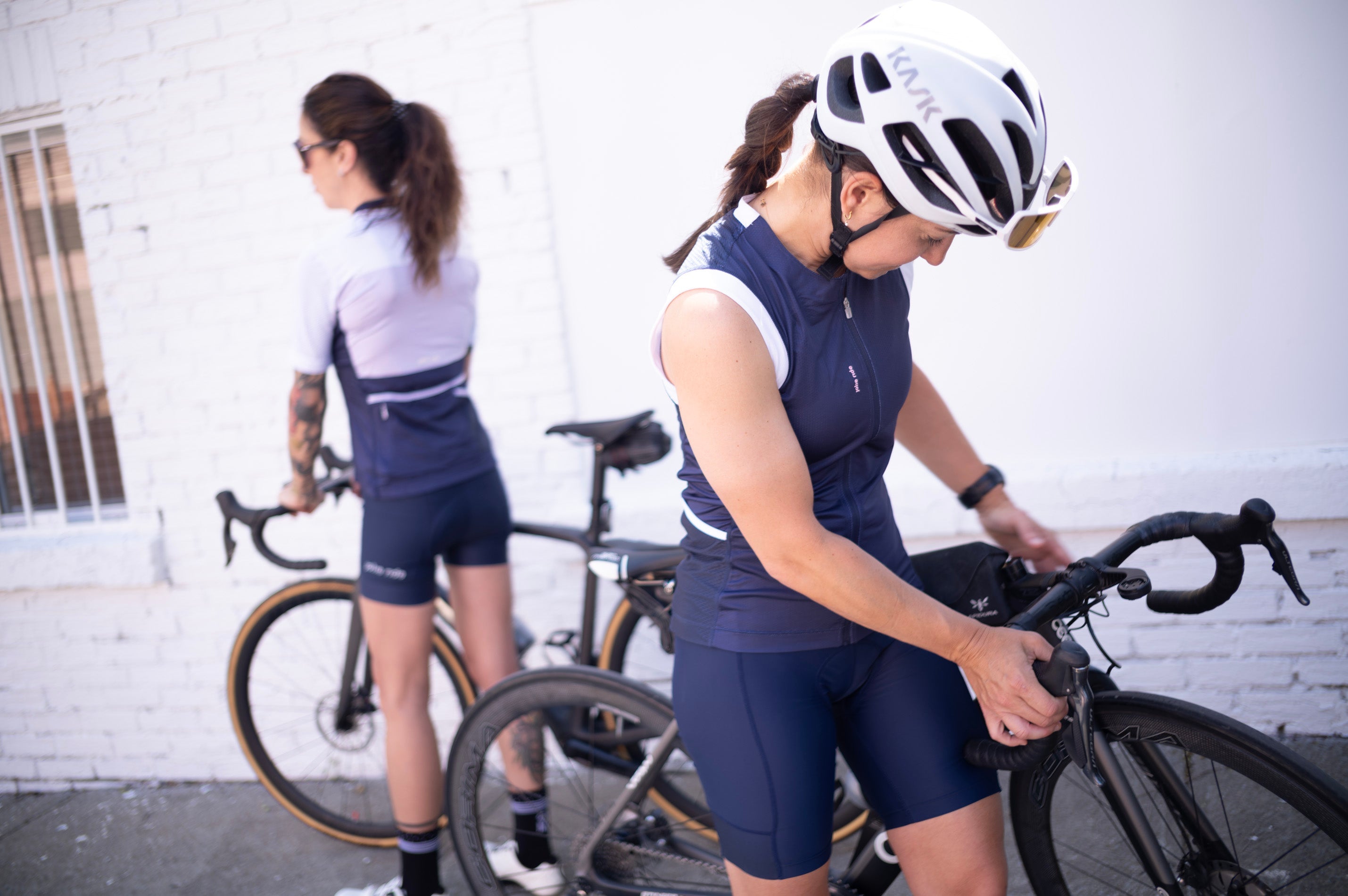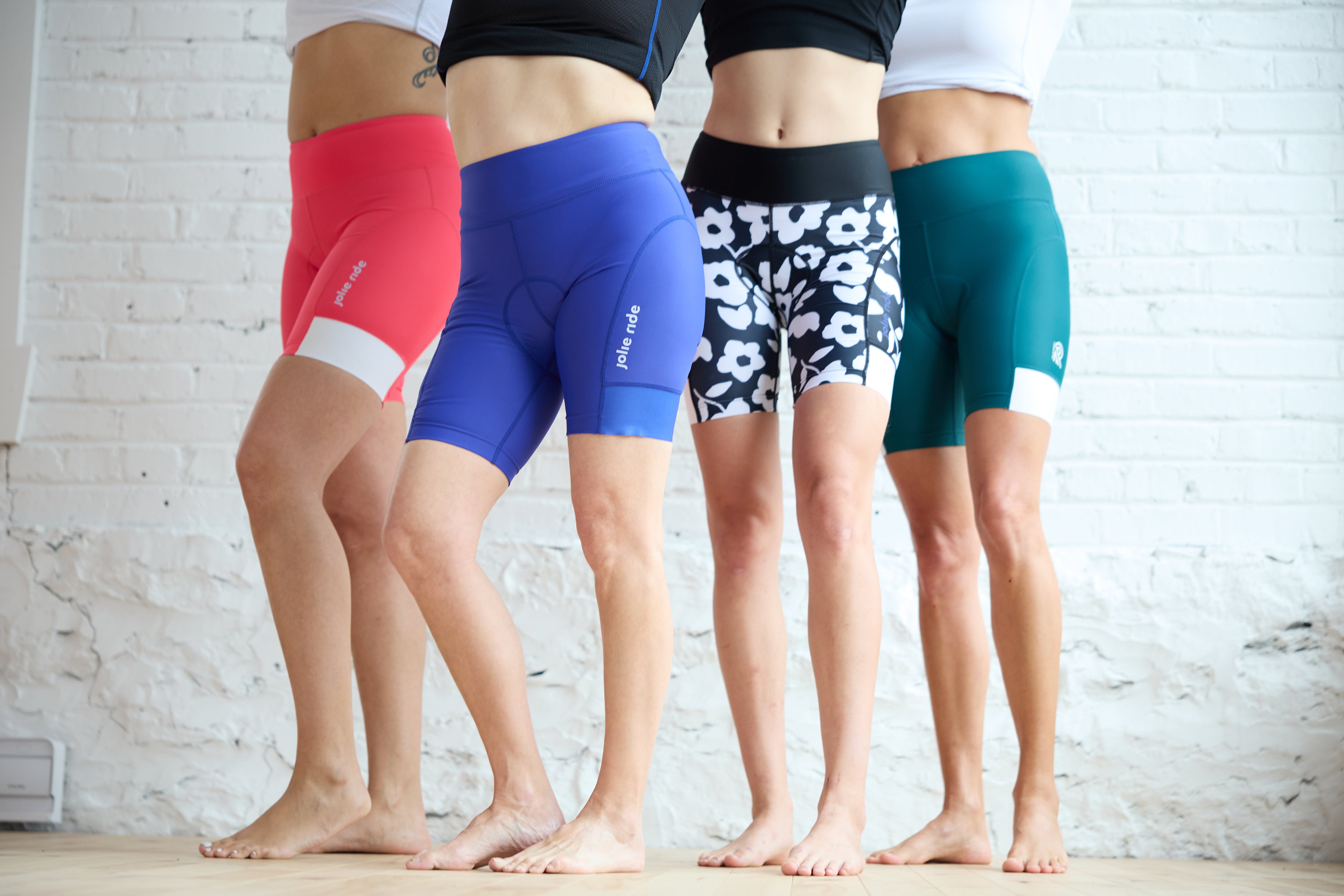Ultimate Guide to Choosing a Women's Cycling Windbreaker

As an integral part of cycling gear, a windbreaker serves to shield you from various weather conditions that can affect your ride. It's not just about keeping you warm; it's about ensuring your comfort and safety during your cycling adventures, regardless of the weather.
However, finding the perfect windbreaker that caters to your specific needs can be challenging due to the vast array of options available. This guide will help navigate this challenge by providing comprehensive insights into the key aspects you need to consider when purchasing a women's cycling windbreaker.
We'll explore everything from material selection and breathability to fit, weather resistance, visibility, and additional features. Our goal is to arm you with the knowledge you need to make a confident and informed decision.
Understanding the Need for a Windbreaker in Cycling
A windbreaker's primary role in cycling is to offer protection against wind chill, a common discomfort for cyclists. The wind-resistant properties of this garment prevent the wind from penetrating through, thus preserving body heat, particularly during high-speed rides or in windy conditions. This makes it indispensable for those who cycle during cooler times or in variable weather conditions.

Aside from wind protection, many windbreakers have evolved to include water resistance. This feature allows cyclists to remain dry during light rain, ensuring that their performance isn't hindered by unexpected weather changes.
Essential Features to Consider in Women's Cycling Windbreakers
- Material: The fabric of your windbreaker significantly impacts its performance and comfort. Different materials offer different advantages:
- Waterproof Materials: These fabrics keep you dry during light rain or drizzle. They are crucial if you often cycle in wet conditions.
- Breathable Fabrics: Breathable materials allow sweat to evaporate, preventing you from feeling clammy during intense rides.
- Lightweight Materials: Lightweight windbreakers are easy to pack and carry. They won't add significant weight to your gear, making them ideal for long distance cycling.
- Fit and Comfort: A good windbreaker should have a snug yet comfortable fit to prevent wind from getting inside. Look for adjustable features such as cuffs, hems, and collars for a better fit. An ill-fitting windbreaker can hinder your movement and affect your riding experience.
- Visibility and Safety: If you often cycle in low light conditions, consider a windbreaker with reflective elements. These features enhance your visibility to other road users, contributing to your safety.
- Ventilation: Ventilation features like back vents or underarm zips help regulate your body temperature. They allow excess heat and sweat to escape, keeping you comfortable during intense rides. This feature is essential, especially for those who cycle in warmer climates or engage in high-intensity cycling.
Different Types of Windbreakers
Windbreakers come in various types, each catering to different needs and conditions.

Lightweight vs. Insulated:
Lightweight windbreakers are ideal for mild weather or high-intensity rides, offering great breathability and minimal weight. However, they might not provide enough warmth in cooler temperatures.
On the other hand, insulated windbreakers are perfect for cold climates, offering an extra layer of insulation for added warmth, but they might be heavier and less breathable.
Packable Windbreakers:
These are a boon for long-distance riders. Designed to be ultra-lightweight and compact, packable windbreakers can be easily carried along. They offer the convenience of quickly putting them on or off as weather changes during your ride.
Aerodynamic Windbreakers:
For competitive cyclists, aerodynamic windbreakers are key. They are designed to minimize air resistance, allowing for faster speeds. They usually have a snug fit and sleek design to reduce drag, although they might compromise on some comfort features for performance.
Top Women's Cycling Windbreakers on the Market
1. Jolie Ride Windbreaker Jacket for Women Cyclists
Navigating through windy trails or brisk morning rides? The Jolie Ride Windbreaker Jacket is your ideal companion. Specially designed for women cyclists, this jacket is the epitome of both function and fashion. Its lightweight design ensures you remain agile and comfortable, while the wind-resistant fabric provides the necessary shield against unpredictable weather conditions.

The Jolie Ride Windbreaker is not just a protective layer; it's a statement of style and practicality, making it a must-have in every female cyclist's wardrobe. Whether you're tackling a mountain trail or cruising through city streets, this jacket guarantees you stay protected without sacrificing style.
2. Pearl Izumi Women's Barrier Convertible Jacket
Pearl Izumi is well-known for its high-quality cycling gear, and this windbreaker is no exception. The Barrier Convertible Jacket stands out with its unique convertible design - it can be worn as a full jacket in cooler weather or transformed into a vest when temperatures rise. This feature makes it adaptable to varying weather conditions, providing flexibility during rides.

Moreover, its lightweight design ensures you don't feel weighed down while cycling. The jacket also boasts a water-resistant fabric, protecting you from light showers during your ride. Its reflective elements provide visibility in low-light conditions, enhancing safety.
3. Gore Bike Wear Women's Phantom 2.0 Windstopper Soft Shell Jacket
The Phantom 2.0 by Gore Bike Wear is another excellent choice for female cyclists. It's designed with a Windstopper Soft Shell fabric that offers superior wind and water resistance while maintaining breathability. This ensures you stay dry and comfortable throughout your ride, regardless of the weather.

What sets this jacket apart is its removable sleeves, allowing you to adjust to changing temperatures with ease. The jacket's back pocket also doubles as a storage pouch for the sleeves, adding to its convenience.
4. Castelli Women's Perfetto Light 2 Jacket
For competitive cyclists, the Perfetto Light 2 Jacket by Castelli is a top contender. This windbreaker is designed to maximize aerodynamic performance with its slim-fitting design. This reduces air resistance, allowing for faster speeds and improved performance during races.

In addition to its performance features, the jacket also has a water-repellent finish, helping to keep you dry in wet conditions. Its reflective detailing enhances visibility, a crucial safety feature for any cycling gear.
5. Endura Women's Windchill II Jacket
If you're cycling in cold weather, the Windchill II Jacket by Endura is a solid choice. This windbreaker is insulated, providing extra warmth to combat chilly temperatures. Despite its insulation, the jacket maintains good breathability, ensuring you stay comfortable even during intense rides.

It also features water-resistant panels and a windproof front, protecting you from the elements. Its rear pockets provide ample storage for essentials, while reflective details enhance visibility.
6. Craft Women's Lithe Jacket
For long-distance riders, the Lithe Jacket by Craft is an excellent option. This windbreaker is ultra-lightweight and packable, making it easy to carry along on your rides. The convenience of being able to put on or take off the jacket as the weather changes is invaluable during long rides.

Beyond its lightweight design, the jacket also offers wind-protective and water-repellent properties. This ensures you stay protected against the elements, regardless of how far you're riding.
Conclusion
In summing up, selecting the appropriate windbreaker can greatly elevate your cycling experience. There are diverse options designed to cater to specific needs, from weather adaptability and aerodynamic efficiency to insulation for colder environments.
The final choice is a personal one, hinging on your individual cycling circumstances and preferences. Key considerations should include weather resistance, weight, breathability, and overall design. Your chosen windbreaker should ultimately contribute to your comfort and enhance your performance. Always stay updated with product descriptions and reviews to ensure you make a well-informed decision. Happy cycling!
Frequently Asked Questions
What is a windbreaker in cycling?
In cycling, a windbreaker is a lightweight jacket designed to protect riders from wind chill and light rain. It's typically made from thin, breathable material that can effectively block the wind while allowing sweat to evaporate, preventing overheating. Windbreakers are ideal for transitional weather or as a layering piece in colder conditions.
What jackets are good for cycling?
Good cycling jackets are those designed specifically for the sport, offering features like wind and water resistance, breathability, and mobility. Look for jackets with a snug fit to reduce air resistance, reflective elements for visibility, and materials like Gore-Tex or similar fabrics for weather protection. Options vary from lightweight windbreakers to insulated winter jackets.
Are cycling jackets warm?
The warmth of a cycling jacket depends on its type and material. While lightweight windbreakers provide minimal insulation, winter cycling jackets are designed to be warm and are often lined with thermal materials. Layering is key in colder weather, with the cycling jacket serving as the outermost layer for wind and water protection.
What are the benefits of a cycling jacket?
The benefits of a cycling jacket include protection from the elements (wind, rain, and sometimes cold), improved visibility due to reflective elements, enhanced comfort through breathable materials, and a performance-oriented fit that reduces drag. They're also designed to accommodate a cyclist's posture and movements.
What is the difference between a cycling jacket and a regular jacket?
The main difference lies in the fit and functionality. Cycling jackets are designed to fit snugly to reduce wind resistance, with longer backs and sleeves to accommodate the riding position. They're made with breathable, weather-resistant fabrics suitable for the physical exertion of cycling. Regular jackets may not offer the same level of functionality, fit, or comfort for cycling.



